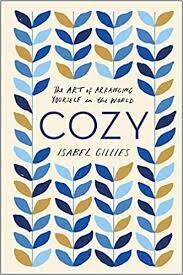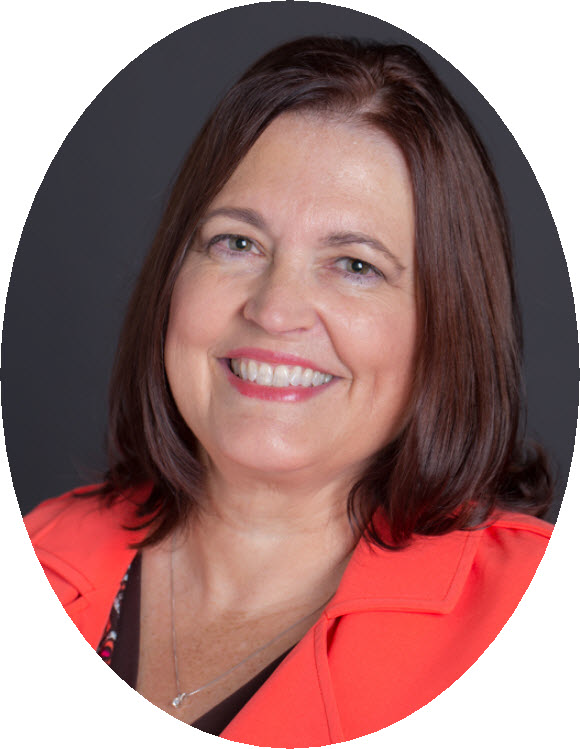
A resource for those seeking information on organizing and transforming spaces.
Book Review - The House We Grew Up In
Set in Cotswold Village England we meet the Bird Family. There are four children all with very different personalities. Meg is the oldest, followed by Bethan and then twin boys Rory and Rhys. Their dad Colin is a lanky young looking college professor. At the center of the novel is the mom Lorelei a bit of a hippy, fun loving stay at home mom. Lorelei “treated the children like precious gems and made every moment sparkle.”
The House We Grew Up In by Lisa Jewell
Set in Cotswold Village England we meet the Bird Family. There are four children all with very different personalities. Meg is the oldest, followed by Bethan and then twin boys Rory and Rhys. Their dad Colin is a lanky young looking college professor. At the center of the novel is the mom Lorelei a bit of a hippy, fun loving stay at home mom. Lorelei “treated the children like precious gems and made every moment sparkle.”
One Easter weekend tragedy strikes and as a result the family starts to fall apart. We follow the Bird family over the next three decades even as they are estranged. Ms. Jewell explores a variety of topics such as mental illness, family secrets, emotional trauma, incarceration and death. However, the main topic which is threaded throughout the entire book is Lorelei’s hoarding. We find out that Lorelei is a compulsive shopper and hoarder which ultimately damages all her relationships.
So what exactly is hoarding? Many times in casual conversations people who collect many things refer to themselves as hoarders. Yet, hoarding is not the same as collecting.
The American Psychiatric Association states “People with hoarding disorder excessively save items that others may view as worthless. They have persistent difficulty getting rid of or parting with possessions, leading to clutter that disrupts their ability to use their living or work spaces.”
As in the book, hoarding can cause a strain on family relationships. Many times family members get frustrated after trying for years to help their family member. Ultimately, Lorelei is left alone and isolated from her family. Hoarding may also lead to safety concerns such as fire hazards or tripping and falling due to lack of paths and open spaces.
So what to do when you are in this situation?
Encourage the person to seek professional help. There are many therapists trained in hoarding. Hoarding is not something that just goes away. The disorder that leads to hoarding will likely be something your significant other will face forever. Having a good therapist will help the person not just during the cleanout but with moving forward in their life.
Read and learn about hoarding. There are many good resources online such as The International OCD Foundation and The Mayo Clinic.
Try not to judge. Try to be supportive and suggest professional treatment.
If they ask for your help try to be helpful. If you find the task too daunting or it leads to arguing consider hiring a professional organizer to work with the individual. Make sure you find an organizer that has experience dealing with hoarding issues.
Decluttering can take months and even years with a person with lived in experience as a hoarder. Do not expect overnight success. Be encouraging and supportive. Baby steps can lead to bigger steps and success down the road.
The House We Grew Up In is an emotional book filled with twists and turns. In the end the family returns back to the house they grew up in to come to grips with the many secrets and topics they need to discuss as a family. It certainly will keep the reader hoping that the Bird family can move forward in spite of all the history and issues they have faced.
Lisa Jewell is the #1 New York bestselling author of eighteen novels, including Then She Was Gone, The Family Upstairs and Invisible Girl.
Book Review - Cozy
In Denmark they call it Hygee (pronounced Hoo-ga) Hygee is experiences with the people you love, being together in a safe comforting environment. Along the same theme, Isabel Gilles has written COZY The Art of Arranging YOURSELF in the WORLD.
In Denmark they call it Hygee (pronounced Hoo-ga) Hygee is experiences with the people you love, being together in a safe comforting environment. Along the same theme, Isabel Gilles has written COZY The Art of Arranging YOURSELF in the WORLD.
When we think of the word cozy we think of a warm blanket, favorite slippers, a special chair or hot cup of tea/coffee. Ms. Gillies explains that being cozy goes beyond objects. According to the author, “cozy is an attitude, not a thing- a shortcut to bringing the most essential parts of ourselves with us where ever we go.”
For example, the author suggests that making the bed can be cozy. As professional organizers we always suggest to our clients to make the bed daily. Making the bed brings order to the day. You have completed a morning task which will encourage you to do other tasks on your to-do list. Also, a clean made bed encourages you to keep the rest of your bedroom organized as well. While you make the bed, you can use the time to set priorities and plan. Of course, in the evening there is nothing like heading to the bedroom and seeing a clean room and well-made bed after a hectic day.
Another room that people find cozy is the kitchen. The smells, the people, the heat from the oven or stove all can be cozy. Many times our cozy childhood memories are the family gathered for meals or watching parents cook. The author states, “kitchens are full of stories as anthologies-if spatulas could talk.” Of course an organized kitchen is always helpful. Here is the note Ms. Gilles leaves for her children, “Turn off all appliances, put food away, clean dirty dishes, wipe down counters, does the kitchen look tidy?”
The book is divided into five parts and we are shown that coziness can be found in many places such as our travels, in our hobbies, in our alone time, in what we drink and even at our workplace. The book ends with family recipes which adds to the coziness of just reading the book.
What the reader learns is that cozy is not just objects in our home but a way of life. If we can dig deep and look beyond our stuff we can find cozy/safety in our daily life, no matter where we are. As the author states, “Cozy isn’t something that just exists. You have to make cozy happen.” By reading COZY, we have the power to make our lives fuller and happier just by acknowledging the coziness of our surroundings.
Isabel Gillies is a New York Times bestselling author of Happens Every Day, A Year and Six Seconds and Starry Night.
Book Review - Don’t Toss My Memories in the Trash
Moving is stressful and overwhelming especially if you have been in your home for many years. Your “treasures” are important to you even they are not necessarily important to others. Seniors face many challenges such as making decisions as to the best place to move, what to bring, the best way to move possessions and how to organize a new home. So many decisions to be made, and sometimes we all need guidance to help make them. Ms Dellaquila, a professional organizer and senior move manager, has written a step by step guide for seniors and their families on how to downsize, organize and move with the least amount of stress.
Don’t Toss My Memories in the Trash by Vickie Dellaquila
Moving is stressful and overwhelming especially if you have been in your home for many years. Your “treasures” are important to you even they are not necessarily important to others. Seniors face many challenges such as making decisions as to the best place to move, what to bring, the best way to move possessions and how to organize a new home. So many decisions to be made, and sometimes we all need guidance to help make them. Ms Dellaquila, a professional organizer and senior move manager, has written a step by step guide for seniors and their families on how to downsize, organize and move with the least amount of stress.
The author states that moving out of the family home usually happens anywhere from
60 years old on. Many seniors have emotional attachments to their homes and the loss of the house and the memories attached can make moving a difficult process. This book helps seniors know what they are going through is “normal” and it will help family members to understand what a senior may be experiencing when moving.
The book guides people through strategies on how to help a senior think about moving. Maybe the house is too expensive to maintain? Maybe people no longer want stairs and are looking for one level? The author suggests taking a road trip to see a few places and not place pressure on the senior. There are many options out there such as retirement communities with activities, condos where landscaping is maintained and apartment living to name a few.
Once the location is decided the difficult task of downsizing/decluttering starts. Usually homeowners cannot take everything they own to their new location. But where to begin?
Hiring a professional organizer is not a necessity but can be a huge help for family who lives out of town or due to work/family commitments does not have the time to spend decluttering.
Also, a professional organizer can act as an unbiased third party when helping make decisions.
For example, some of the services we provide at H2H Organizing are as follows:
-Sort/pack/or dispose of possessions
-Arrange for moving company
-Interact with family members
-Help arrange donates, consignments and appraisals
-Work with real estate broker
-Help on moving day
-Help unpack/organize new living space
-Organizing/Maintenance after move
A challenge when moving is what to do with the many boxes of keepsake items accumulated through the years such as yearbooks, photo’s, special collections and memorabilia. One technique Ms. Dellaquila employed with a client was suggesting 5 categories:
-Before marriage
-Travel
-Children
-After marriage
-Career
She purchased 5 bins and labeled each bin one of the categories. She guided the client to save “only the amount of memorabilia that would fit in each container.” This gave the client the understanding to only keep what was truly important and meaningful. Months later after the move, the client was able to sit down with her granddaughter and scrapbook what she saved. What a wonderful way to share memories between generations!
Speaking of keepsakes, at H2H we suggest removing photos out of frames and donating the frames. Maybe scan the photos and create a book. If you have a prom dress or high school letter jacket, maybe cut a swatch of fabric as a memory? There are many ways to declutter and still keep your memories alive.
Chapter 8 is key as it deals with what you will need to bring to your new home. For example, do you need lawn tools if the landscaping is being done for you? If you are moving to a warm climate it may be time to donate your winter coats. Are your meals provided and if so what cooking utensils do you really need? Also important to think about is what furniture to bring and what will fit? There are good suggestions on how to measure and decide what to take with you on moving day.
Chapter 13 deals with the actual move. Suggestions on packing yourself are excellent.
For example, an “open me first” box with items such as toilet paper, tissues, lamp and bulbs, snacks, pet supplies etc…The author also deals with how to hire a moving company, questions to ask and what to expect from the movers. Such valuable information!
As with most professional organizers, Ms. Dellaquila does follow-up with her clients 6 months after the move. There is information at the end of the book with references and websites for senior move assistance. This book will guide you during the downsizing process and alleviate any resentment and frustration. The advice in this book will ensure a smooth transition and make the move as stress free as possible.
Book Review - The Home Edit
Even Professional Organizers need inspiration from time to time. Recently we picked up a copy of THE HOME EDIT as we always are looking for new ideas to stay on top of our game
THE HOME EDIT – A Guide to Organizing and Realizing Your House Goals
By Clea Shearer and Joanna Teplin
Even Professional Organizers need inspiration from time to time. Recently we picked up a copy of THE HOME EDIT as we are always looking for new ideas to stay on top of our game. The authors founded THE HOME EDIT with the goal of merging conventional organization and interior design. Similar to how we declutter at H2H Organizing, the beginning of the book discusses paring down items by taking EVERYTHING OUT of the area you are trying to declutter. You then group the items by category, decide what will be kept, donated or trashed, and then develop the perfect storage systems for the kept items. (of course this all takes time and if you need assistance feel free to contact us at H2H)
This is where the beauty of the book begins! Each area of the a house is beautifully photographed, with exquisite organizational suggestions. For example, Gwyneth Paltrow’s playroom is an inspiration with color coordination throughout, and plastic toy containers for easy in easy out when her children are looking for their Lego, games and puzzles. The pantry has great suggestions using, turntables, tea caddy, and clear plastic kitchen containers so you can see exactly what food you own. Wire and wicker baskets are used for bathroom storage and EVERYTHING is labeled! Labels help maintain your organization making it easy for everyone to know where things are stored.
Of course we all don’t have walk in pantries or walk in closets, and we all live on different budgets. Use the book for inspiration and ideas, take what applies to your home and is realistic for you on your budget.
If you are looking for overall organization and design tips this book is for you. Terrific photography will help you visualize how you can make your living space pretty to look at and easy to maintain, with efficient organization to make your life stress free.











